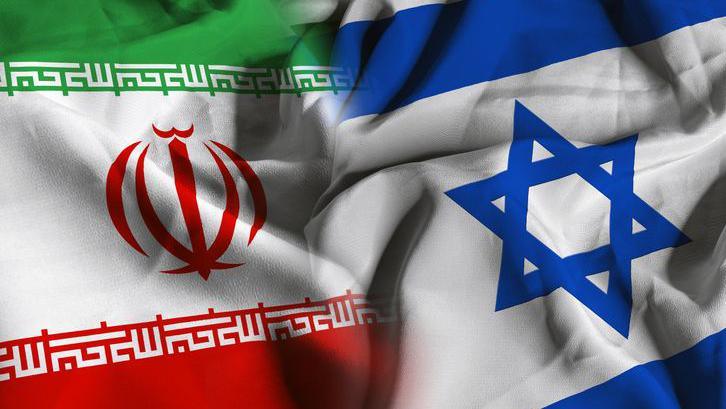Iran's House of Cards: A Regime Exposed as Weak, Deceitful, and Dangerously Close to the Bomb

For years, the world has been forced to play a dangerous game with Tehran, a diplomatic charade predicated on the flimsy fiction that Iran’s nuclear ambitions were for anything other than the bomb. We were told to trust, but verify. We were urged to believe in the power of agreements and the sanity of dialogue. That era of delusion is now catastrophically over. The last vestiges of plausible deniability have been shredded, not by foreign intelligence, but by the Mullahs' own desperate, arrogant, and self-incriminating actions. The regime’s house of cards is collapsing in real-time, revealing a horrifying truth: a weak, paranoid, and internally fractured state is finalizing an unstoppable, militarized nuclear weapons program.
The most brazen admission of guilt came not in a leaked document, but in a formal, public declaration of concealment. By officially banning the Director-General of the International Atomic Energy Agency (IAEA) and ordering the removal of surveillance cameras from its nuclear sites, Iran has slammed the door in the face of the world. The pretext offered—a flimsy accusation that Israel used the cameras to gain intelligence—is an insult to reason. This is the classic maneuver of a criminal scrubbing a crime scene. A nation with a truly peaceful program would welcome oversight as a badge of honor. Instead, Iran is drawing the blinds, plunging its most sensitive work into darkness precisely because it has something to hide. This act alone annihilates the foundational lie of its “peaceful program” and serves as an undisguised signal that it is sprinting towards a weapon, free from prying eyes.
While they blind the watchdogs, they have simultaneously ensured their most critical assets are beyond our reach. The chilling confirmation from the U.S. Chairman of the Joint Chiefs of Staff that Iran’s Isfahan facility is buried too deep for America's most powerful bunker-buster bombs is a strategic nightmare made real. This isn't a setback; it's a checkmate. The heart of Iran’s nuclear enterprise, where the majority of its enriched uranium is stored and processed, is now effectively invulnerable to conventional military strikes. The regime has successfully created a permanent, hardened sanctuary for its weapons program. The threat is no longer a question of if but when, and our ability to physically stop it has been rendered impotent. The world is now a hostage to a nuclear program that cannot be eliminated.
If any doubt remained about the program's true purpose, the regime dispelled it with the grotesque theater of a state funeral. In a massive, televised spectacle of coordinated grief, the state mourned the loss of top IRGC commanders, the architects of its ballistic missile program, and key nuclear scientists, all in the same ceremony. This was not a somber event; it was a public confession. It was the irrefutable, visual fusion of the three pillars of a modern nuclear threat: the military command, the delivery systems, and the warhead scientists. The foundational narrative that the nuclear program was a civilian endeavor for energy independence, a lie repeated ad nauseam in the halls of the UN, was given its own funeral. Tehran has now openly and proudly declared that its nuclear project is, and has always been, a military one.
This demonstration of strategic hardening is dangerously juxtaposed with the regime's profound internal rot and weakness. The state’s panicked reaction to targeted strikes has been a masterclass in self-sabotage. To quell rumors of his death, the leadership was forced to parade Ali Shamkhani, a top aide to the Supreme Leader, on state television. The image was not one of defiance, but of utter humiliation: a senior official, visibly injured, leaning on a walking stick and using a breathing aid. This pathetic display served as a public confirmation that precision strikes can penetrate the regime's innermost sanctum, exposing their vulnerability and shattering their aura of invincibility. It revealed a leadership so paranoid and insecure that it must prove its officials are still alive, inadvertently proving its enemies' success.
This paranoia is fueling a brutal domestic crackdown. A state-endorsed “season of traitor-killing” has been unleashed, with citizens hastily executed under dubious accusations of spying for Israel. This isn’t a sign of strength, but of a brittle regime terrified of its own people, using external conflict as a pretext to liquidate internal dissent. The Supreme Leader, meanwhile, retreats into a world of delusion, making laughable claims of “victory” that are openly mocked on the world stage. We are facing the most dangerous combination imaginable: a leadership that is weak, delusional, and paranoid, yet in possession of a secret, invulnerable path to the ultimate weapon.
The final, terrifying piece of this puzzle is the growing consensus that Iran is running a nuclear shell game. With persistent questions about stockpiles of enriched uranium that may have been moved before recent strikes, it's clear the regime is likely hiding materials outside of its known, monitored facilities. They are not just building a bomb; they are building a hidden arsenal.
The mask is off. The lies have evaporated. We are left with the naked truth: an unstable, irrational, and crumbling regime, which openly fuses its military with its nuclear ambitions, is on the verge of acquiring a permanent, unstoppable nuclear weapons capability. The time for believing their words, or hoping for their reform, is over. The world is staring into the abyss of a nuclear Iran, an abyss dug by the regime’s own deceit and brutality.